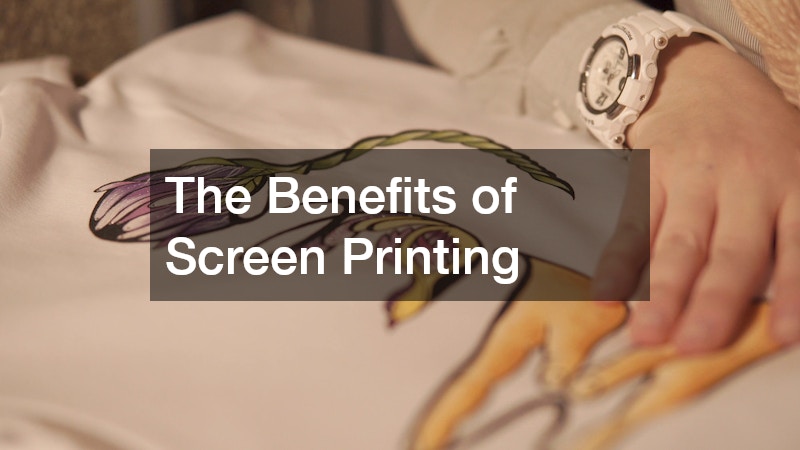
Screen printing has stood the test of time as an art form and a practical printing solution, offering vibrant, durable results across countless applications. From its ancient origins to its modern-day role in fashion, marketing, and manufacturing, this technique blends creativity with functionality. Understanding how screen printing works—and why it remains a preferred choice over other printing methods—reveals its lasting impact on industries and its evolving role in a more sustainable future.
Video Source
Screen printing is a time-honored printing technique that dates back to ancient China around 960 AD. It gained widespread popularity in the Western world during the 20th century due to its ability to produce high-quality, vibrant prints. Screen printing involves creating a stencil (known as a screen) and applying layers of ink on the printing surface. This method is celebrated for its versatility and ability to print on various materials, including textiles, paper, ceramics, and more.
The technical process of screen printing begins with preparing the screen, which is typically made of a fine mesh stretched over a frame. Areas that shouldn't be printed are blocked out on the screen, creating a stencil. Ink is then pushed through the open mesh areas of the screen onto the printing surface using a squeegee. Each color requires a separate screen, allowing for vibrant, multi-colored designs but necessitating precision and careful planning in multicolor projects.
Compared to other printing techniques such as digital printing or heat transfer, screen printing stands out due to its durability. The thick layers of ink applied during screen printing create a print that can withstand frequent washing and exposure to sunlight without fading. This is particularly advantageous for items like T-shirts, outdoor signs, and promotional products that require long-lasting quality.
Another advantage of screen printing is its versatility. Unlike digital methods, screen printing can be executed on an array of surfaces, both flat and textured. Additionally, it handles specialty inks exceptionally well, including glow-in-the-dark and metallic finishes, which are often challenging for other printing methods. This opens up a myriad of possibilities for creative expression and customization for businesses and individuals alike.
Cost-effectiveness is a key factor in choosing screen printing over other methods, especially for large orders. Screen printing setup can be more involved than digital printing, but once the initial screens are created, the cost per unit drops significantly in bulk orders. This makes screen printing an economical choice for businesses looking to produce large quantities of products without sacrificing quality.
The economic benefits of screen printing manifest in several ways for businesses. Larger order volumes benefit from economies of scale, where the cost per unit decreases as production quantity increases. This is particularly useful for companies that require large batches of uniforms, merchandise, or promotional materials, as screen printing remains one of the most budget-friendly options at scale.
Screen printing also supports brand consistency and quality control. Companies can ensure their branding is represented accurately with vibrant colors that don't fade easily, helping maintain professional appearances and customer satisfaction. Consistency in branding across products is crucial for brand recognition and loyalty, making screen printing a reliable option for businesses.
The fashion industry has embraced screen printing for its ability to create intricate and unique designs that stand out on garments. This technique allows designers to experiment with various special effects, such as high-density prints or delicate foils, giving fashion items an edge that attracts style-conscious customers. Custom apparel lines often utilize screen printing to cater to specific design elements that require precision and quality.
Screen printing has revolutionized the concept of limited edition and collaboration pieces in fashion. Brands can create exclusive lines that appeal to niche markets, offering a personalized touch that mass-produced items may lack. This exclusivity can enhance brand reputation and consumer engagement, driving demand and revenue in the competitive fashion sector.
Despite its benefits, screen printing does have environmental implications, particularly concerning ink and chemical usage. Traditionally, the industry relied heavily on plastisol inks containing PVC and phthalates, which are harmful to the environment. However, there's a growing shift toward water-based inks that are less toxic and more eco-friendly. These inks offer similar, if not superior, quality and durability, without compromising environmental integrity.
Modern technology also supports sustainable practices within screen printing through reclaiming and recycling processes. Used screens can be cleaned and reused, reducing waste and costs associated with material procurement. Additionally, printers are adopting more efficient cleaning systems that use fewer chemicals, embracing closed-loop systems that minimize water usage and limit contamination.
Screen printing's durability, versatility, and cost-effectiveness have cemented its place as a go-to printing method for businesses, artists, and designers. Its ability to adapt to new materials, embrace specialty effects, and evolve toward eco-friendly practices ensures it remains relevant in an increasingly competitive and environmentally conscious marketplace. As technology and creativity continue to advance, screen printing is poised to keep making bold, lasting impressions for years to come.
